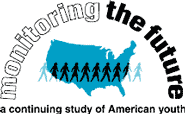Brief Description
There are a variety of sources of information NIDA uses to monitor the prevalence and trends regarding drug abuse in the United States. The resources below cover a variety of drug related issues, including information on drug usage, emergency room data, prevention and treatment programs, and other research findings.
Costs of Substance Abuse
Abuse of tobacco, alcohol, and illicit drugs is costly to our Nation, exacting more than $740 billion annually in costs related to crime, lost work productivity and health care.**
| Health Care | Overall | Year Estimate Based On | |
|---|---|---|---|
| Tobacco1,2 | $168 billion | $300 billion | 2010 |
| Alcohol3 | $27 billion | $249 billion | 2010 |
| Illicit Drugs4,5 | $11 billion | $193 billion | 2007 |
| Prescription Opioids6 | $26 billion | $78.5 billion | 2013 |
Supplemental/References for Economic Costs
**Note: The overall cost of illicit drugs includes the misuse of prescription drugs, however the exact estimate for this category is not stated in the 2011 report4. A separate analysis of 2007 data5 estimated US costs of prescription opioid misuse at $55.7 billion. The most recent estimate of prescription opioid misuse, based on 2013 data, updated this cost to $78.5 billion, an increase of more than $20 billion per year compared to six years ago. Taken together, with the growing misuse of opioids and related health consequences, the cost estimates for illicit drug use in the US are likely to have risen substantially since the last available estimate in 2007.
- U.S. Department of Health and Human Services. The Health Consequences of Smoking—50 Years of Progress. A Report of the Surgeon General. Atlanta, GA: U.S. Department of Health and Human Services, Centers for Disease Control and Prevention, National Center for Chronic Disease Prevention and Health Promotion, Office on Smoking and Health; 2014. www.surgeongeneral.gov/library/reports/50-years-of-progress/full-report.pdf (PDF, 38MB)
- Xu X, Bishop EE, Kennedy SM, Simpson SA, Pechacek TF. Annual Healthcare Spending Attributable to Cigarette Smoking: An Update. American Journal of Preventive Medicine 2014;48(3):326–33 [accessed 2017 Feb 28].
- Centers for Disease Control and Prevention. Excessive Drinking is Draining the U.S. Economy. https://www.cdc.gov/features/costsofdrinking/ Updated January 2016. Accessed April 21, 2017.
- National Drug Intelligence Center. National Drug Threat Assessment. Washington, DC: United States Department of Justice; 2011. www.justice.gov/archive/ndic/pubs44/44849/44849p.pdf(PDF, 8MB)
- Birnbaum, HG. et al. Societal Costs of Prescription Opioid Abuse, Dependence, and Misuse in the United States. Pain Medicine 2011; 12: 657-667.
- Florence, CS et al. The Economic Burden of Prescription Opioid Overdose, Abuse, and Dependence in the United States, 2013; Medical Care. Volume 54, Number 10, October 2016.
Monitoring the Future Survey (MTF)
Results from a yearly survey of teenagers conducted by the University of Michigan's Institute for Social Research and funded by NIDA. (Survey results, updated each autumn.) View survey results and MTF publications.
National Survey on Drug Use and Health (NSDUH)
The Substance Abuse and Mental Health Services Administration's (SAMHSA) NSDUH (formerly called the National Household Survey on Drug Abuse) is the primary source of information on the prevalence, patterns, and consequences of alcohol, tobacco, and illegal drug use and abuse in the general U.S. civilian noninstitutionalized population, ages 12 and older. Survey information can be found at: www.samhsa.gov/data/population-data-nsduh.
SAMHSA sometimes releases specialized reports using the NSDUH data, including a July 2016 report exploring rates of marijuana use and perceptions of risks of harm associated with marijuana use by state and substate regions.
National Drug Early Warning System (NDEWS)
NDEWS monitors drug use trends in 12 sentinel communities across the United States. Sentinel Site profiles describing drug abuse trends and emerging issues will be available on the University of Maryland NDEWS website
Overdose Deaths (CDC Wonder)
CDC WONDER (Wide-ranging Online Data for Epidemiologic Research) makes the information resources of the Centers for Disease Control and Prevention (CDC) available to public health professionals and the public at large. NIDA has compiled data on drug overdose deaths from this resource, please note that not all drug types are reported.
Related Resources
- National Drug Early Warning System (NDEWS)
- Drug Abuse Data from the Community Epidemiology Work Group (Archives)
- Economic Costs of Drug Abuse in the United States, 1992-2002 (PDF, 2.4MB) - Detailed description by the Office of National Drug Control Policy of the societal costs of drug abuse
- Monitoring the Future Survey - Study funded by NIDA and performed by the University of Michigan
- Youth Risk Behavior Survey - Study conducted by the Centers for Disease Control and Prevention
- National Survey on Drug Use and Health - Study conducted by the Substance Abuse and Mental Health Services Administration (SAMHSA)








